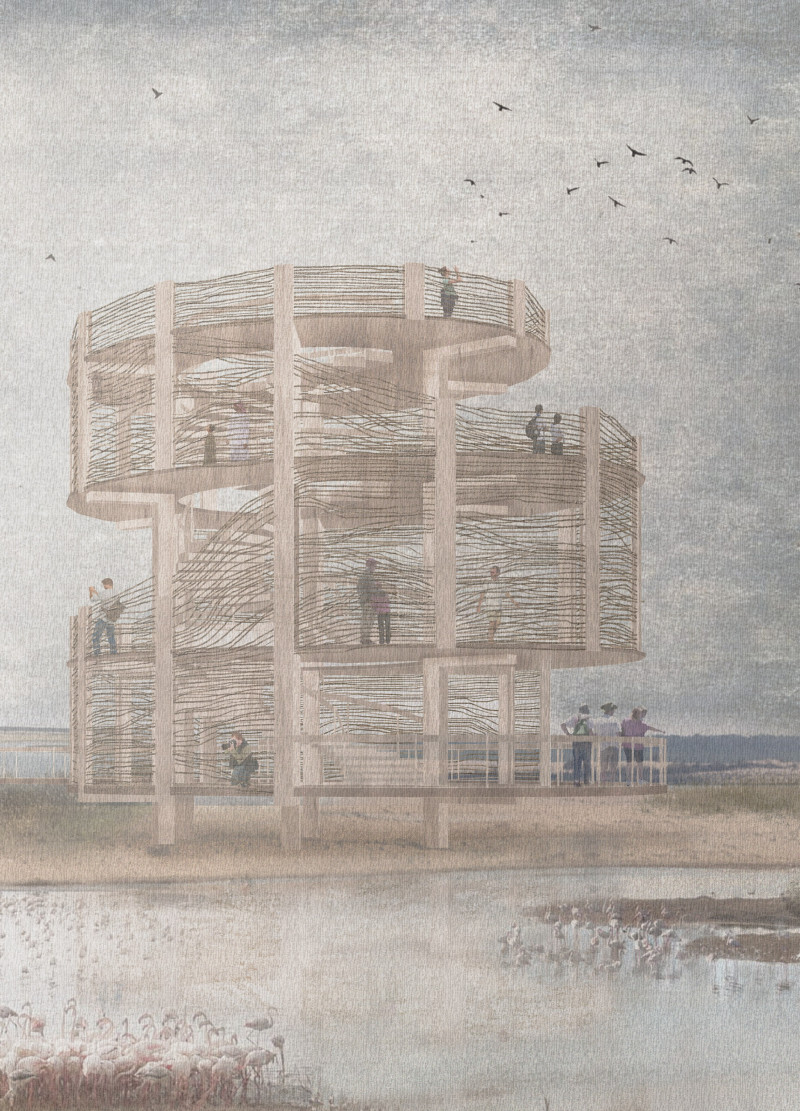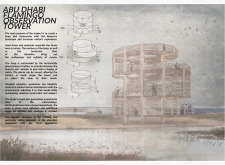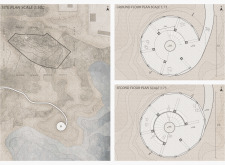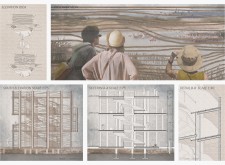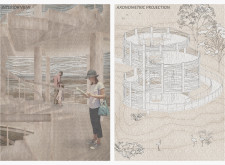5 key facts about this project
At first glance, the tower's circular form reflects a thoughtful design approach, embracing the natural curves and soft lines found in its surroundings. This choice of geometry not only blends seamlessly with the landscape but also invites users to experience the natural beauty from various vantage points. The layout consists of two levels, both crafted to facilitate observation and interaction. The architectural design prioritizes user experience, enabling visitors to ascend and adjust their viewing positions to witness the dynamic activities of the flamingos and other local fauna.
Materiality plays a significant role in this project. The predominant use of wood signals a commitment to eco-friendly practices, offering a tactile connection to the earth while ensuring that the structure remains inviting and warm. Additionally, rattan is employed in certain areas, providing visual texture while allowing fluid movement within the space. These materials contribute to a sustainable design philosophy, as they minimize environmental impact and reflect the diverse textures found within the wetlands.
The unique design approaches utilized in the Abu Dhabi Flamingo Observation Tower are worth noting. Firstly, the tower's adaptability in elevating the viewing platform allows for a personalized experience for each visitor. This flexibility enhances engagement, inviting people to explore varying perspectives of the natural landscape. The partitioning of levels encourages diverse interactions, accommodating both solitary observation and group activities, thus broadening its appeal.
Moreover, the project is a testament to the importance of ecological integration. The careful consideration of its siting underscored a commitment to preserving the delicate balance of the habitat, demonstrating a design that is contextually aware. By allowing visitors to enjoy unobstructed views of the wetlands, the tower fosters a deeper connection between humanity and nature, facilitating an understanding of the importance of wildlife conservation.
Importantly, the architectural plans capture the flow of movement throughout the space, delineating areas dedicated to observation, rest, and education. The architectural sections delineate the relationship between the structure and the surrounding environment, showcasing how it interacts with the landscape while maintaining a respectful distance from the natural habitat. These elements collectively reinforce the educational potential of the tower, serving as a platform for enlightening visitors about the ecological significance of the region.
The Abu Dhabi Flamingo Observation Tower stands as a commendable example of how thoughtful architectural design can function as a bridge between humans and nature. Its form, materiality, and innovative approaches highlight the potential for architecture to contribute positively to ecological awareness and conservation efforts. To explore the project presentation further and gain deeper insights into the architectural ideas, designs, sections, and plans that define this unique observation tower, readers are encouraged to delve into comprehensive resources available about this engaging architectural endeavor.


